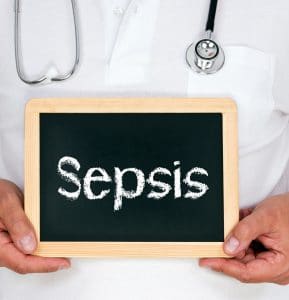Every year more than one million Americans develop sepsis—a life-threatening medical condition that arises when the body initiates a powerful immune response against an infection.
“Pocket Film” Aims to Save Lives of Older Americans through Early Recognition of Sepsis
Published August 2, 2013
Alliance for Aging Research releases short film that teaches the signs of sepsis and the importance of acting quickly to save patients and loved ones from this deadly disease.

August 2nd, 2013 WASHINGTON, D.C. – Every year more than one million Americans develop sepsis—a life-threatening medical condition that arises when the body initiates a powerful immune response against an infection.
Anyone can get sepsis but two-thirds of all cases occur in people over the age of 65. It’s the 10th leading cause of death in the U.S. and up to 40% of patients don’t survive. Older adults, especially those with weakened immune systems, chronic conditions like heart disease and various types of cancer, and those over the age of 85 are more likely to succumb to sepsis.
However, the Alliance for Aging Research knows that early recognition of symptoms and appropriate treatment can save lives. In order to spread the word on how critical it is to act quickly, and to teach the signs and symptoms of sepsis so that families and loved ones will know what to look for, the Alliance released a short “pocket film.” To view the film visit Sepsis in Older Americans: Saving Lives through Early Detection and Treatment.
In this compelling, animated video viewers learn that the common symptoms of sepsis include fever, rapid heart rate, and rapid breathing. The source of the initial infection can also lead to additional serious symptoms. For example, pneumonia as the local infection could also lead to sepsis symptoms that include painful coughing, shortness of breath, and discolored mucous.
The film emphasizes that not all infections lead to sepsis, but that progression from a localized infection to full-blown sepsis can occur in mere hours. “This rapid onset makes it critical that the symptoms of sepsis are recognized quickly and the patient receives treatment before the infection is out-of-control and it’s too late,” says Susan Peschin, MHS, Chief Executive Officer of the Alliance.
“Not only are older adults more prone to the development of sepsis, but their symptoms may also differ from younger patients, making it more difficult to recognize,” says Peschin. Septic older patients may not have a fever and in may instead develop cold, clammy skin. They are also more likely to exhibit sudden mental confusion, delirium, fatigue, malaise, weakness, shortness of breath, poor appetite, chills, dizziness, and low blood pressure.
If you or a loved one has any of these symptoms in the presence of infection, get medical care immediately. Keep in mind that for every hour delay of appropriate treatment, the risk of death increases by 8%. Don’t wait—goet to the hospital immediately.
This compelling film was developed by the Alliance with support from Edwards Lifesciences. It was written and directed by Martina Cartwright, PhD, RD, President & CEO of Beacon Science Inc. Art and animation was done by Derk Ebeling and narration by Lee Kanne. The content was developed with guidance from an expert panel included E Wesley Ely, MD, MPH, Professor of Medicine, VA-GRECC, TN Valley, Vanderbilt University; Imrana Malik, MD, DABSM, Associate Professor, Department of Critical Care, University of Texas, MD Anderson Cancer Center; and Steven M. Opal, MD, Professor of Medicine, Infectious Disease Division, Alpert Medical School of Brown University.
Remember, know the signs and seek early treatment. Together we can save lives.
To view this film visit Sepsis in Older Americans: Saving Lives through Early Detection and Treatment. For more information on this important resource, contact Lindsay Clarke, Vice President of Health Programs at the Alliance for Aging Research at 202-293-2856 or [email protected].
###
The Alliance for Aging Research is the leading nonprofit organization dedicated to accelerating the pace of scientific discoveries and their application to vastly improve the universal human experience of aging and health.
